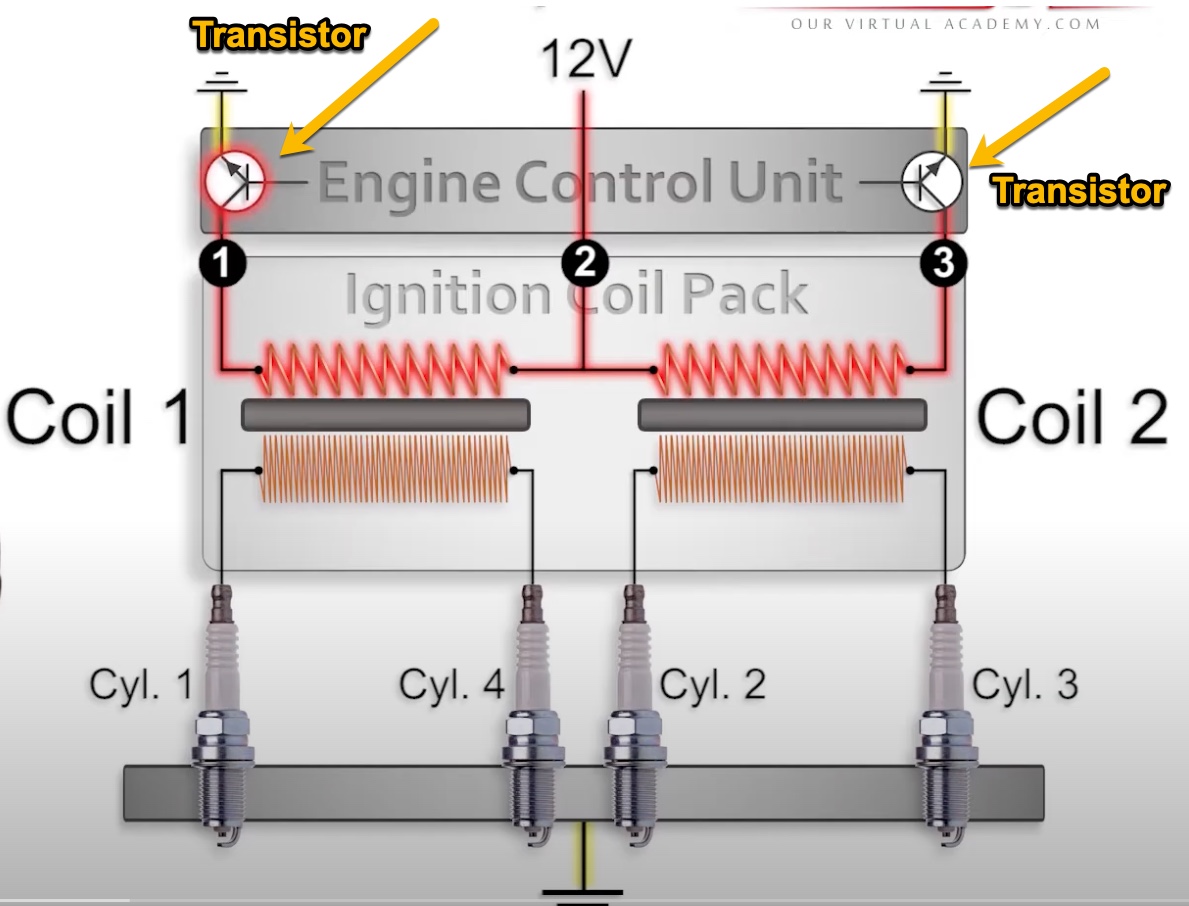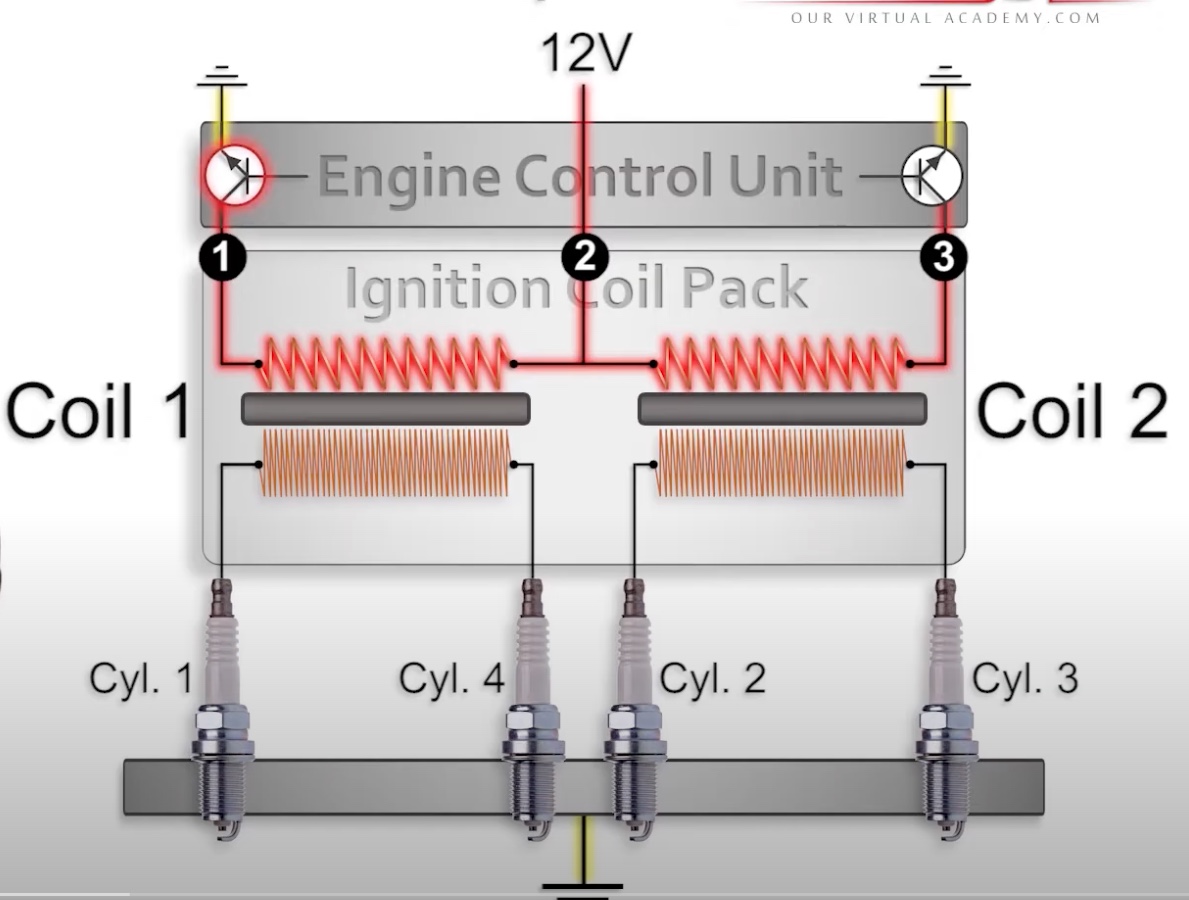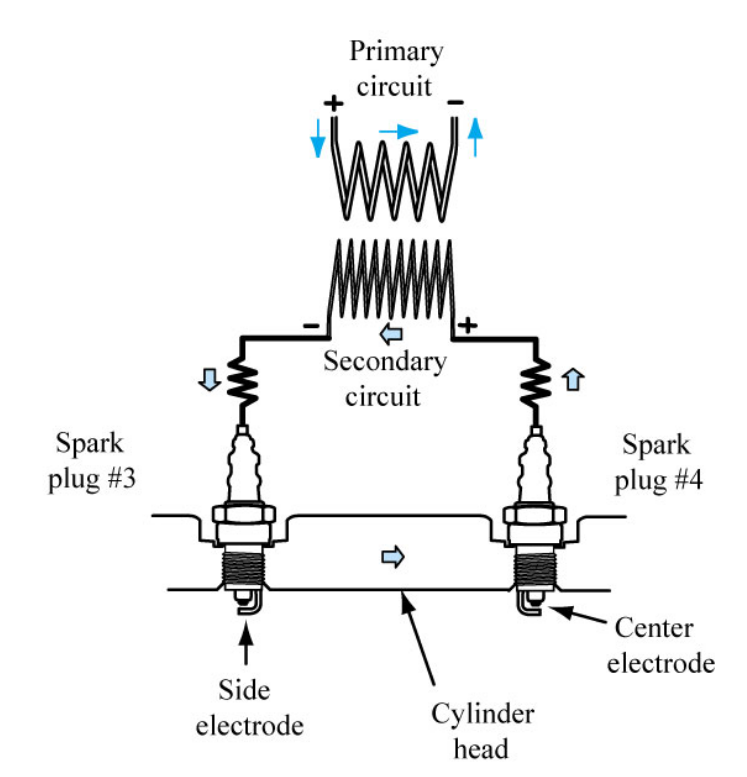A waste spark ignition system fires spark plugs in an efficient way. It delivers a spark to two cylinders at once.
One is in the compression stroke, and the other is in the exhaust stroke. This system is common in many modern engines. It helps in reducing emissions and improving fuel economy. Waste spark systems use fewer components than traditional systems.
This makes them lighter and often more reliable. Understanding how this system works can help in maintaining your vehicle better. In this blog, we will explore the mechanics behind a waste spark ignition system. We will also look at its advantages and how it operates. So, let’s dive into the details and understand how it fires the spark plugs.

Credit: www.smog-tech-training.com
Introduction To Waste Spark Ignition System
A waste spark ignition system uses a single coil for two cylinders. The coil produces a spark for both cylinders at the same time. One spark fires on the compression stroke, and the other fires on the exhaust stroke. This is why it’s called a waste spark system. The second spark is not needed for combustion. It is “wasted” on the exhaust stroke. This system is simple and reliable.
This system was first used in the 1980s. Car makers wanted a more efficient ignition. The waste spark system was cheaper and easier to maintain. Many cars from that time used this system. It helped improve fuel efficiency. It also reduced emissions. Over time, more advanced systems have been developed. But the waste spark system is still used in some cars today.
Key Components
The ignition coil is a key part of the ignition system. It changes low voltage from the battery to high voltage. This high voltage is needed to ignite the fuel. Without the coil, the spark plugs would not fire. The coil works by using a magnetic field. This field is created by the low voltage. It then collapses, creating high voltage. This high voltage is sent to the spark plugs.
Spark plugs are small but important. They create a spark that ignites the fuel. Each plug is placed in the engine’s cylinder head. The high voltage from the coil goes to the spark plug. This high voltage jumps the gap at the plug’s tip. This jump creates a spark. The spark then lights the fuel. This makes the engine run. Without good spark plugs, the engine won’t work well.
Working Principle
The primary winding has thick wire. It carries a low voltage. The secondary winding has thin wire. It carries a high voltage. Both windings are in the ignition coil. They work together to create a spark.
Energy moves from the primary winding to the secondary winding. This happens very fast. The high voltage from the secondary winding goes to the spark plug. This creates a spark. The spark starts the engine.
Advantages Of Waste Spark System
The waste spark system is less expensive than other systems. It uses fewer components. This means lower manufacturing costs. Maintenance is also cheaper. Fewer parts mean fewer things can break. This saves money in the long run.
The design of the waste spark system is simple. It uses only one coil for two cylinders. This reduces the number of coils needed. A simple design means easier repairs. Less complicated systems are easier to fix. This makes the waste spark system user-friendly.
Challenges And Limitations
Spark plugs in a waste spark system face more wear. They fire twice as often as in regular systems. This can lead to faster wear and tear. Frequent maintenance becomes necessary. Changing spark plugs often can be costly. Unplanned breakdowns may happen if not checked regularly.
Waste spark systems may not fit all cars. Older models may face issues. Some cars need special spark plugs. Using the wrong type can cause engine problems. Electrical systems need to be compatible too. Mismatched systems may not work well together. This can lead to poor performance and damage.

Credit: www.smog-tech-training.com
Comparison With Other Ignition Systems
Distributor-based systems use a single coil. This coil sends energy to the distributor. The distributor then sends this energy to each spark plug. This process is slow and has more moving parts. These moving parts can wear out. Waste spark systems use fewer parts, making them more reliable.
Coil-on-plug systems are different. Each spark plug has its own coil. This makes the system more accurate. It also reduces the chance of misfires. Waste spark systems are simpler and cost less. They still provide good performance. Coil-on-plug systems can be more complex and expensive.
Efficiency Factors
A waste spark ignition system can help save fuel. It uses fewer parts. This makes the engine work better. Less fuel is used to make the engine run.
Ignition timing is important for engine efficiency. The spark must fire at the right time. This helps the engine burn fuel better. Good timing means more power and less fuel use.
Applications In Modern Vehicles
The waste spark ignition system is used in many passenger cars. It helps ignite the fuel-air mixture in the engine. This system fires two spark plugs at the same time. One spark plug fires in the compression stroke and the other in the exhaust stroke. This makes the system reliable and efficient. Many modern cars use this system to reduce emissions and improve fuel economy.
Many commercial vehicles also use the waste spark ignition system. These vehicles need to be durable and efficient. The system helps in reducing maintenance costs. It ensures the engine runs smoothly. The waste spark system is cost-effective. It is perfect for trucks, buses, and other large vehicles. It helps in prolonging the engine life and enhancing performance.
Future Trends
A waste spark ignition system fires the spark plugs by using a single coil to ignite two spark plugs simultaneously. This method ensures efficient ignition by firing one spark plug on the compression stroke and the other on the exhaust stroke.
Technological Innovations
New technologies will make ignition systems better. Sensors will give real-time data. This helps in better engine performance. AI will also play a role. It will make systems more efficient. Smart ignition systems will become common. They will adjust to different driving conditions. This means better fuel economy and less pollution. Future cars will benefit from these innovations.
Environmental Impact
Ignition systems will be eco-friendly. Less fuel will be used. This reduces carbon emissions. Better spark timing also helps. Engines will run cleaner and smoother. This is good for the environment. Hybrid and electric cars will use advanced systems. This will make them even greener. The planet will benefit from these changes.

Credit: mechanics.stackexchange.com
Conclusion
A waste spark ignition system efficiently fires spark plugs. It uses a single coil to ignite two plugs simultaneously. This system simplifies design and reduces costs. It’s reliable and effective for many engines. Understanding how it works helps in maintaining your vehicle.
Regular check-ups ensure optimal performance. In essence, a waste spark system keeps engines running smoothly. It’s a simple yet effective ignition method. Thank you for reading about waste spark ignition systems.
